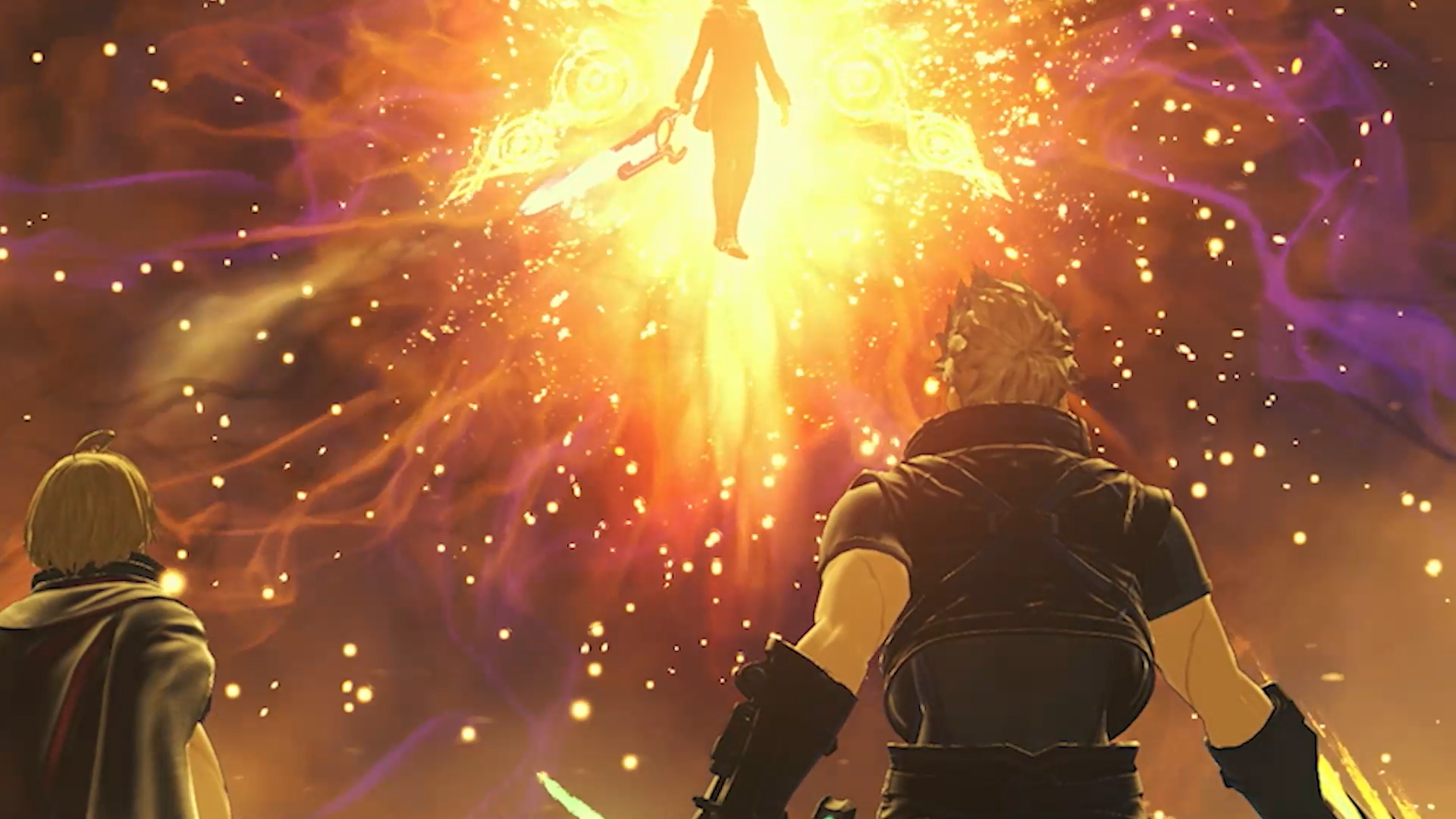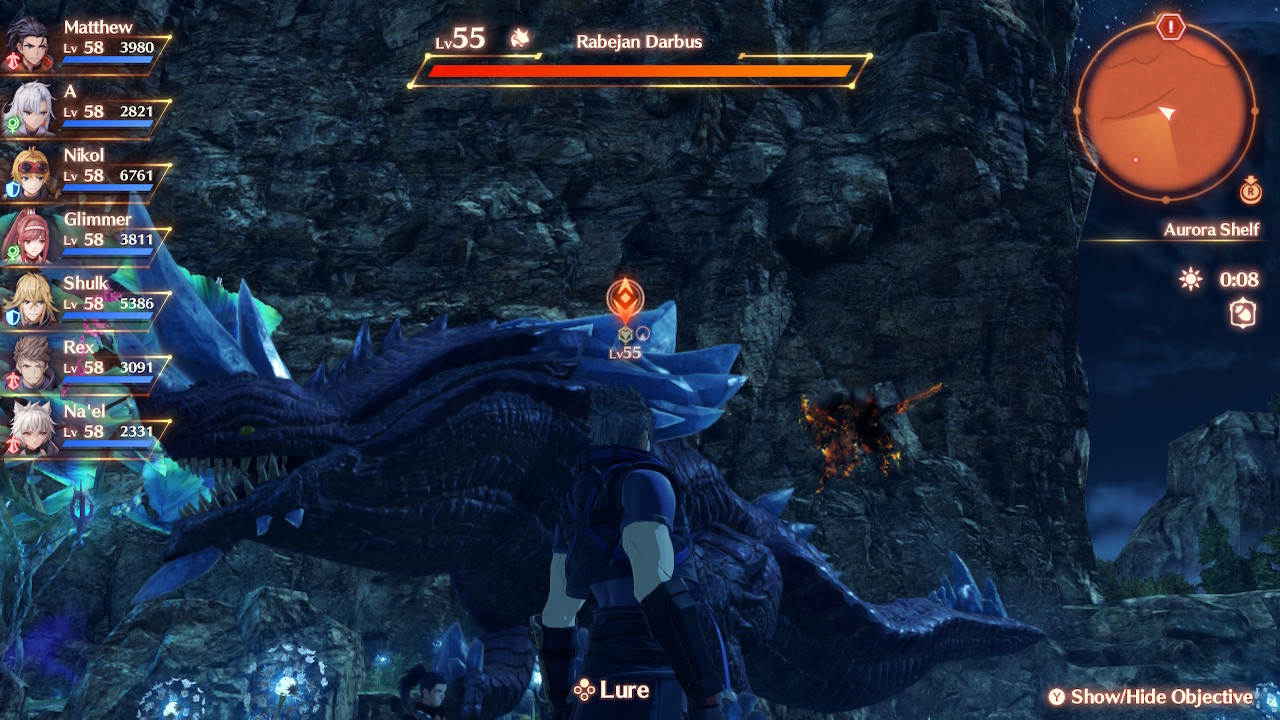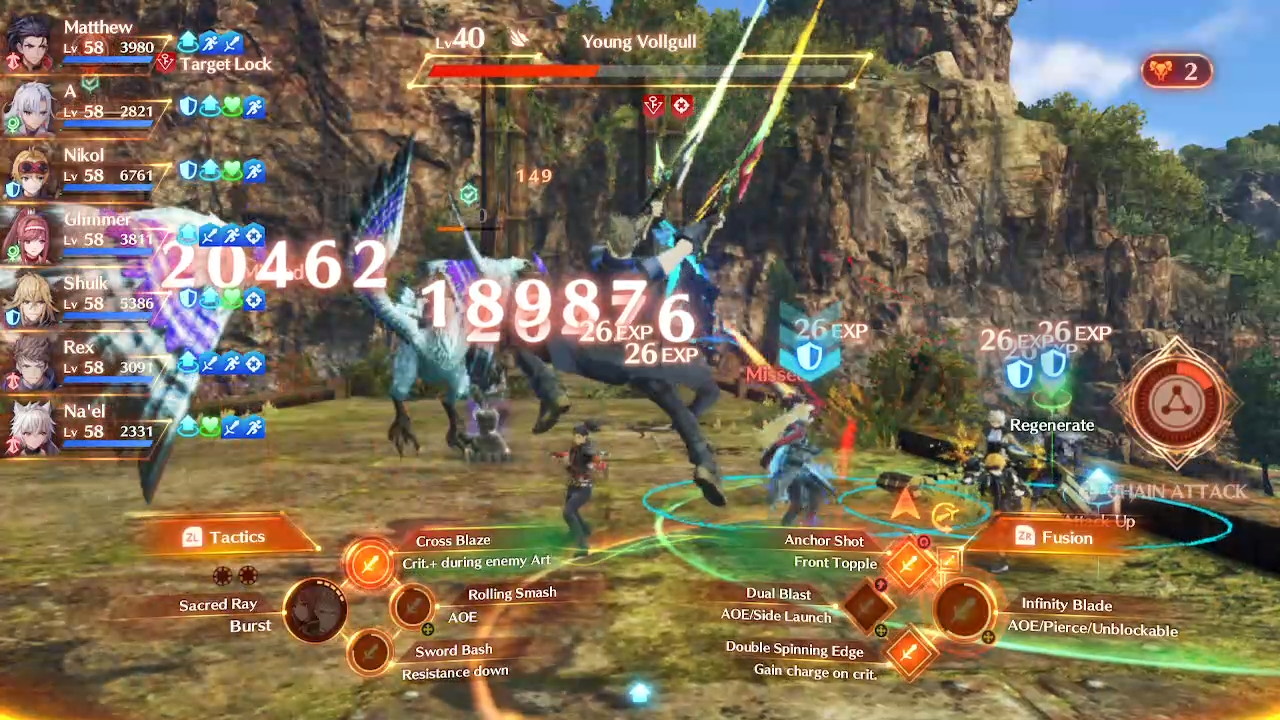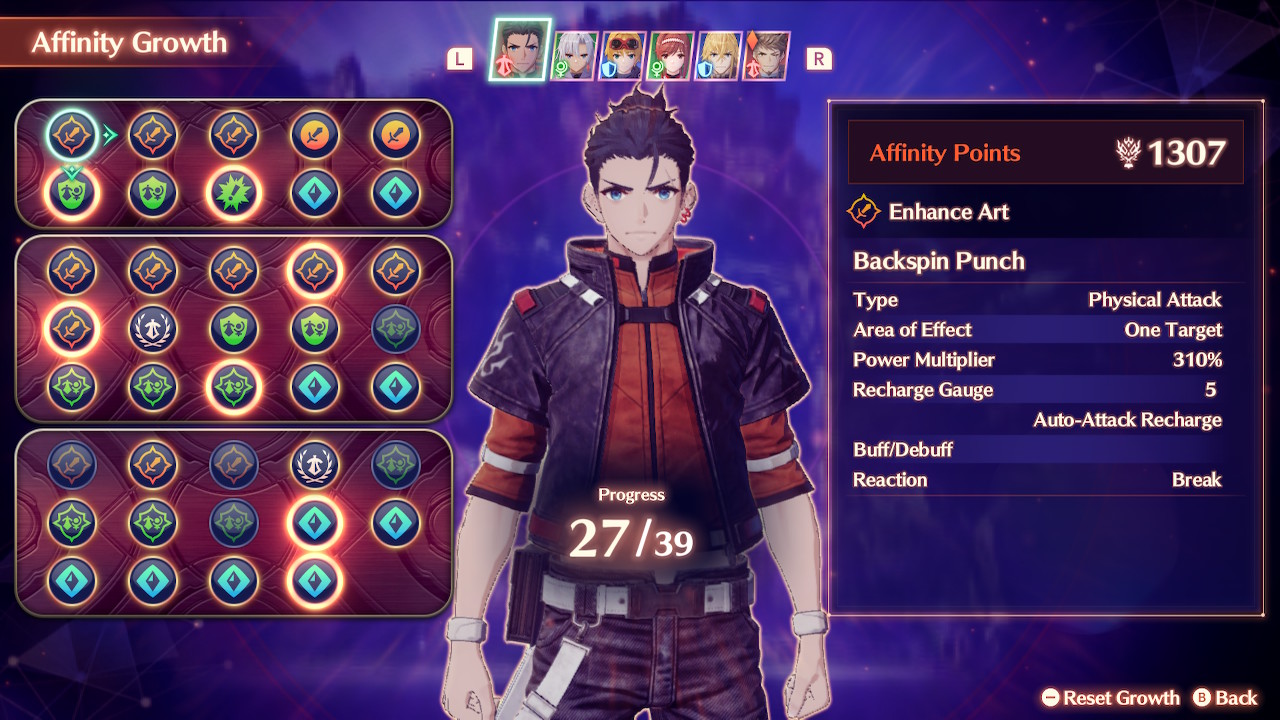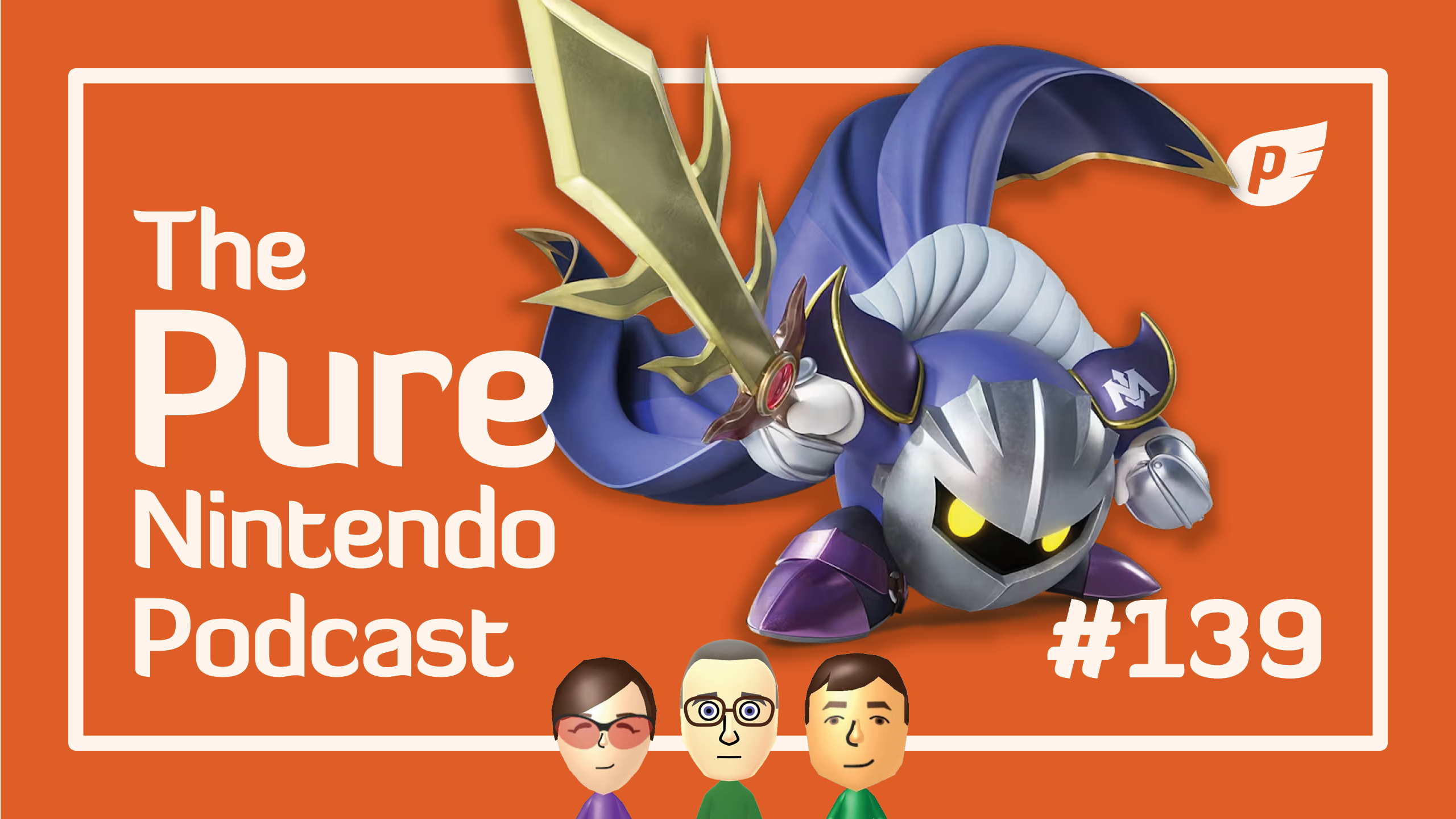Xenoblade Chronicles 3: Future Redeemed is a thank-you card to fans. Whereas you could theoretically play any of the Xenoblade Chronicles games on their own, this last wave of the Xenoblade Chronicles 3 expansion pass expects you to have played through 1, 2, and 3, and rewards you for having done so.
Warning: This review contains some minor spoilers.
The game takes place in Aionios before the events of Xenoblade Chronicles 3, and it introduces us to two new heroes: Matthew and A. Before we meet them, however, we get a cutscene with Shulk (XC1), Rex (XC2), and Z (of all people—XC3) squaring off against Alvis from XC1. So, not only do they immediately dump characters at us from across the series, but they challenge what we know about these characters. Alvis is a bad guy? Z’s a good guy? Shulk and Rex are buddies?
Get used to that, because Future Redeemed spends a lot of time tying together loose ends from across the three games. It’s not always successful at this; the writers occasionally make some pretty big leaps and gloss over important elements of earlier stories where it’s convenient to do so. I can’t offer details without spoiling events, but these story issues are not worth worrying about, anyway. If the developers didn’t have a carefully planned vision of where the Xenoblade Chronicles story would end, they got there more coherently than, say, George Lucas did with Star Wars.
I also have to make a spoiler-free attempt at questioning why some characters of Xenoblade Chronicles 1 and 2 got love while others didn’t even get a mention. We see some favorites in memories, some are simply referenced (overtly or obliquely), and others are completely ignored. Even those who are talked about don’t get much detail on what happened to them. The story of Future Redeemed is a bit of a letdown in that regard.
I’m happy to say, however, that that’s the only letdown. I never felt that a moment of the 40+ hours I took to complete it was a waste. This is partially because of the nature of expansion passes. Knowing this would be a much shorter adventure than the main game, I took more time trying to hit everything. I didn’t, of course. There are still some quests to be unlocked, the Collectopedia (hey, welcome back!) is not full, and I have a couple level 90+ unique monsters to fell. But the game gives you so much to do that you’ll feel completely satisfied despite not taking it to 100% completion.
It helps that exploration is further refined. Matthew has an X-Radar that notifies you when you’re near an object of importance, for example, and I wish that device would’ve been handed off to Noah in the main game. The drawback here is that you’ll be notified of items you simply can’t reach yet, and that can lead to a lot of wasted time trying to get where you currently can’t go.
Killing monsters across the landscape improves relations with the community (research, I guess), and the game indicates on the main screen whether that needs to be done for each monster you see. Quest monsters are identified, too. So, you don’t have to fight or check a sub-screen to determine whether a particular animal provides more than experience or required items. The community menu is easier to navigate, too. Seeing what has to be done to improve relations amongst NPCs is clearly defined, and taking care of that often gives you something to do when you don’t feel like fighting.
Combat has also been revamped, and thank goodness for that. I mentioned recently on the Pure Nintendo Podcast that hopping back into Xenoblade Chronicles 3 for expansion pack waves after a few months is confusing, as it’s hard to remember all the nuances of the characters I’d optimized. Future Redeemed tosses all of that aside and tweaks the real-time combat in new and fun ways. You’re still relying on auto attacks to power up your arts, and you get to select those arts and skills to suit/support the character you prefer to control.
Unlike the Ouroboros combos of the main game, however, any two playable characters can now be paired for unity attacks and combos. Mixing and matching these was fun, and you’ll likely quickly settle on pairings that suit your combat steps (or that just have the best animations). The pairings affect your chain attacks, and reaching/using those chains is easier this time around. There’s a lot to customize across pairings, skills, arts, and accessories, but it’s never overwhelming. Just make sure you stay on top of it and you’ll be fine.
The game looks as good as ever, with wonderfully colorful and detailed environments to explore. The daylight changes are stunning to observe, and fans of the earlier games will be thrilled as they enter familiar locations. The combat animations are magnificent, but you’ll likely spend more time watching your art indicators than your characters. Finally, the cutscenes are as good as ever. They lack the emotional impact of the main games, but they do provide some very endearing moments for the playable characters—especially Shulk and Rex.
As with Xenoblade Chronicles: Future Connected and Xenoblade Chronicles 2: Torna ~ The Golden Country, Monolith Soft has provided an absolutely essential addition with Future Redeemed. It’s a blast to play, it offers nostalgia for fans of the whole series, and it dots some Is that needed dotting (albeit leaving some Ts uncrossed). One particular revelation was so glorious and unexpected that I had to keep my son up late on a school night to watch the full cutscene with me again.
And finally, although it brings the trilogy to a solid conclusion, we do get a distant glimmer of hope for what may come next. I have my theories for what that could be, but I’ll save those for a future podcast.

